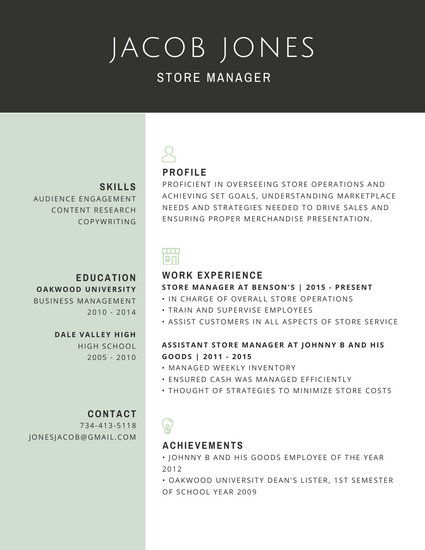

Name and contact information: Make sure you have your name, email address, link to a portfolio, and phone number listed somewhere easy to spot. You’ll want to make sure you have the following items in your resume:
Canva cv maker download#
You may need to download the template and open in it a word processing program to make certain adjustments, like changing column widths. Play around with fonts, add a dash of color, add another column, or rearrange any information to fit your needs. We’ve kept it simple so you could customize your resume according to your tastes. Here’s a template you can use for inspiration. If you’re dying to incorporate a fun design element but find it just won’t fit, don’t worry-you’ll have your portfolio to show off your creativity too.Ī blank page can be intimidating. But remember to prioritize the content you want to include. Good use of whitespace and design elements can make a resume look clean and give it space to breathe. Think about the job you’re applying to and choose the projects and skills that are most applicable. Keep in mind this doesn’t always have to mean the most recent. Giving more room to your most relevant experiences can be a good idea. If you have the space, you can include some facts about yourself outside of your design experience that can help humanize you or make you memorable to a recruiter. Creative director, UX designer, and student Read more: 4 UX Careers Beyond Design You’ll Want to Explore 6. It’ll be a good idea to have somebody you trust look through your resume to catch any errors you might have overlooked. If you feel crunched for space, check to see if your resume has any excessive white space, or adjust your font sizes (though make sure it’s still easily readable). This can give the recruiter a fuller picture of who you are, and show that you might have some unique skills. If you’ve changed careers, it can be useful to quickly reference what you were doing before, if you have space. Shaunak transitioned his career from a systems analyst to a UX designer. Read more: 5 UX Designer Career Paths: Stepping Up Your Design Career 5. Choose the way that allows you to convey your work accomplishments most effectively. You can describe your work experience in bullet-point lists or in short sentences. A resume that prioritizes your skills and areas of expertise is called a “functional resume.” But if there’s something you want to emphasize before everything else, some exceptions can be made. Generally, it’s a good idea to organize jobs in chronological order to help hiring managers get a sense of your career progression.


Finding creative ways to list information can save space for other relevant items. Thinking about how your work impacted a product, team, or company can be a good starting point to decide what to emphasize.

UX design internĪs an intern, you might not have led teams, but you probably learned new skills and had an impact. Read more: 9 Essential Skills for UX Designers in 2021 2. Work or club involvement that show your passions, or workplace skills like time management, collaboration, or communication can be beneficial. Don’t be afraid to put down experiences that didn’t directly involve design. Visit your career center to see if they can connect you with design internships and other opportunities.Īs a student, your work experiences might still be limited. You can also approach the leadership of a group you’re in already to see if you can take on any design projects, like designing social media posts or a website. Join a student group that will let you use your design skills. Look for opportunities on campus to exercise the skills you’ll want to use professionally. If you’re a student, emphasize any relevant experience like internships or relevant extracurriculars to build out your resume. Each has several takeaways you can incorporate into your own. Though no resume is ever perfect, you can learn a lot by seeing what other people have done before you. The following seven resumes are from designers at various stages in their careers. UX designer resumes: From current student to senior designers


 0 kommentar(er)
0 kommentar(er)
